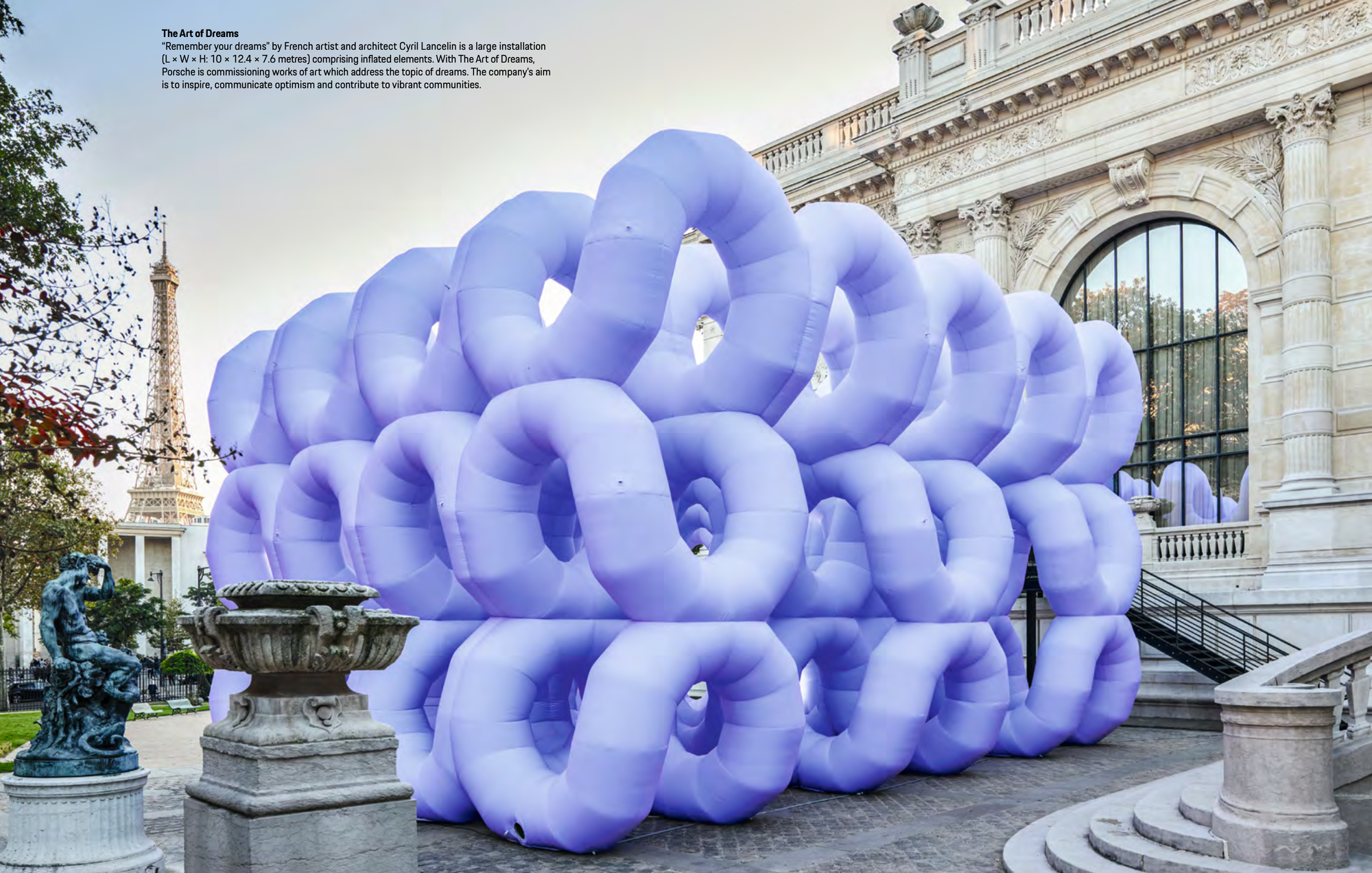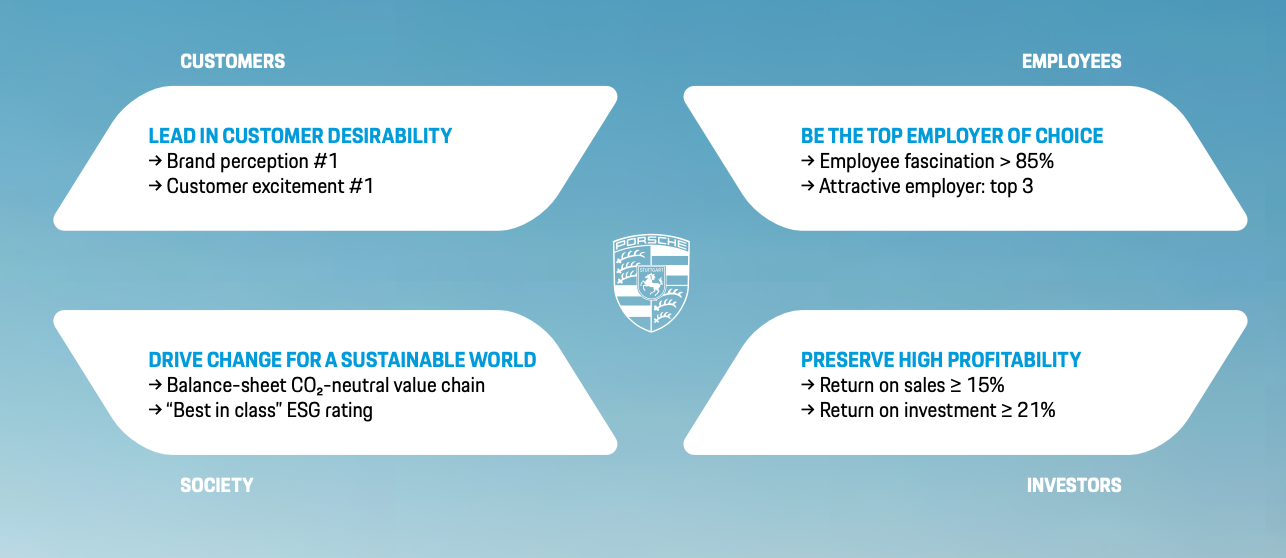A quick look at the Porsche 2030 strategy
Porsche's dreamy aspiration for the future looks like a winner.

Founded in 1931, Porsche is one of the world's most iconic automotive brands.
But unlike Toyota or VW, Porsche don't see themselves as selling 'a transportation solution'; oh no. The value of the Porsche brand transcends the functional utility of the car itself; rather they see themselves as fulfilling lifelong dreams.

Yes - they are 'in the business of selling dreams', which is a far more compelling proposition than simply selling cars.
Translating this lens into promotion, a collaboration with British superstar Dua Lipa captures this positioning well.
This dreamscape strategy is a part of a much broader approach by the brand that was recently made public in their Strategy 2030 document, which as a publicly listed company is available for scrutiny.
PORSCHE STRATEGY 2030
A brand for those who follow their dreams
The world is becoming increasingly digital, more connected and also more volatile.
This is inevitably changing markets and what customers need. Working environments are growing ever more complex. Climate change is increasing. Electromobility is becoming more and more established. Porsche sees these challenges as an opportunity: “The view into the future is always tinged with uncertainty. That’s exactly why it’s important for the strategy to guide us and connect the major issues to specific company aims. Our Strategy 2030 provides an excellent basis for this,” says Oliver Blume, Chairman of the Executive Board of Porsche AG. Specifically, it is about making the company’s actions even more sustainable. Giving the customers a comprehensive product experience. And, in the process, doing business profitably and being a good employer. The corporate strategy shows us the way. Porsche certainly intends to make a success of transformation.
Goals 2030
Mission 2030
“In the beginning, I looked around and could not find quite the car I dreamed of. So I decided to build it myself.”
With this aspiration, trailblazer Ferry Porsche set the tone for the future. It is now more than 70 years since he built the 356 and created the Porsche sports car brand. Since then, his words have lost none of their appeal. Quite the opposite, in fact. Ferry Porsche’s statement perfectly describes the current mission with which the company is shaping the future.
Vision 2030
The company’s vision carries Ferry Porsche’s mindset into the future: “The brand for those who follow their dreams.” This explicitly includes the employees. Chairman of the Executive Board Oliver Blume says:
“Porsche epitomises freedom and independence – and the inner drive to achieve goals. To this day, nothing has changed in that regard. We want to help our customers realise their lifelong dreams.”
Goals 2030
Porsche has defined its goals based on the four stakeholder dimensions of customers, society, employees and investors. In keeping with this vision, the company aims to be the most recognised brand in the world and one that particularly excites its customers.

Sustainability is now an even bigger priority. As a company, Porsche wishes to be balance sheet CO2-neutral by 2030 – across the entire value chain. The sports car manufacturer voluntarily has its sustainability achievements in the areas of the environment, society and responsible corporate governance rated annually by the sustainability rating agency ISS ESG. Porsche has set itself the goal of being classified as one of the leading companies in the automotive industry in this rating.

Porsche is also rising to the financial challenges of transformation. The company is investing heavily, among other things in sustainability, innovation, digitalisation and training. Despite this necessary financial effort, Porsche is sticking to its strategic target of a return on sales of at least 15 per cent and a return on investment of at least 21 per cent.
What's the crux of it?
At the heart of the strategy Porsche are recognising that the world is changing on multiple dimensions at the same time. What they are aiming to achieve here is really an idealised embracing of all of these uncertainties into a big opportunity. If they are able to adapt and leverage their own legacy of design excellence in response to these changes, they can literally create a dreamlike reality for all stakeholders as a result; or at least that's how we're synthesising all of this.
By aligning their brand with art and dreams they don't then engage in the messy automotive world of performance and efficiency that can be very numbers driven and sterile from a customer perspective.
What they are selling is the intangible manifested as art.

